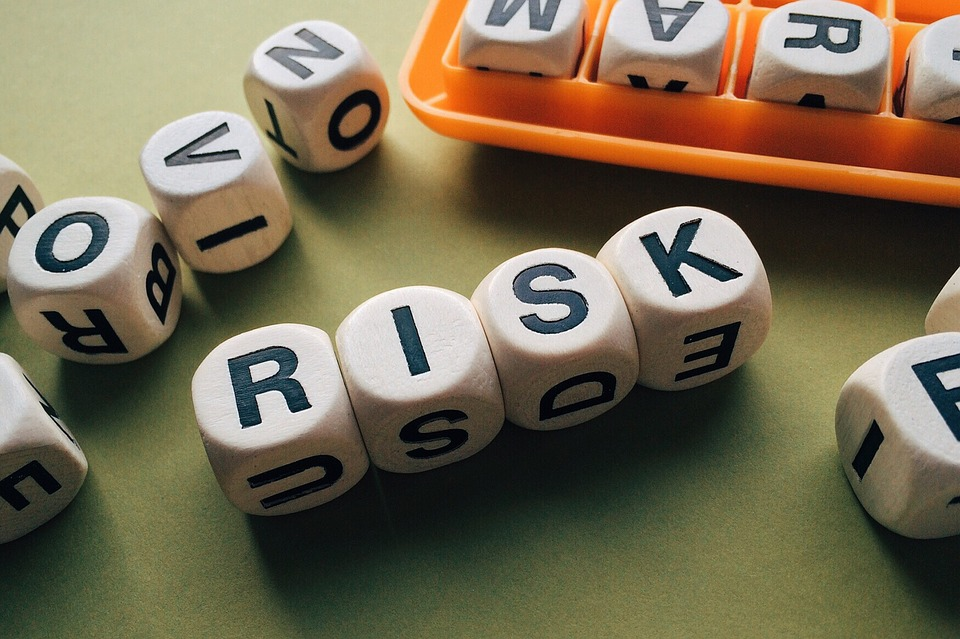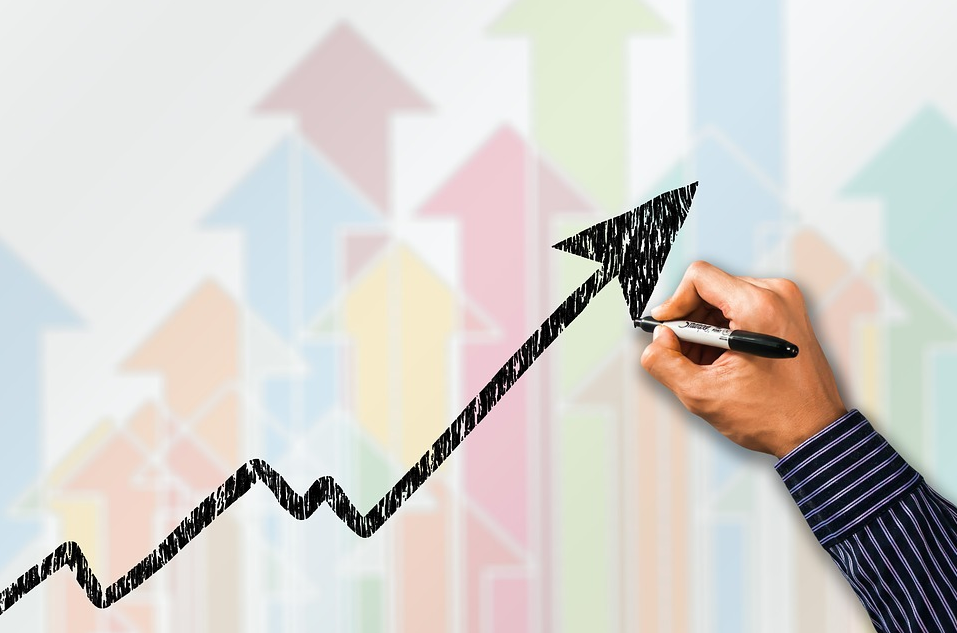
Trading risk management is incredibly important for a successful trader career. Here I show you 5 tips how to successfully calculate and apply your risk management.
A well-known rule from classic stock exchange trading is: “Limit losses. Let profits run”.
If it were always so easy…
Especially in trading, we must be able to assess and control the risk for our portfolio at all times.
We need to know how much I can lose in the upcoming trade and how big the chance of a potential profit is.
There are useful tools that I will introduce you to today that can optimize your trading risk management.
Before we start, I’d like to start with a basic question.
Why Do I Need A Working Risk Management System At All?
Risk management does not only exist in trading, but in almost every company in the world. Wikipedia formulates it this way, among other things:
“According to the ISO 31000: 2009 standard, risk management is a management task in which the risks of an organization are identified, analyzed and evaluated. For this purpose, overriding goals, strategies and policies of the organization for risk management must be defined.”
In a company, internal and external risks have to be minimized or suitable measures taken to keep the potential monetary damage from an event low.
Trading risk management is basically concerned with an identical objective.
In trading, our account is exposed to risk every time a trade is entered into. As we trade derivatives, the following risks are significant:
- Market risk: The market price risk arises from the continuous change in the prices of an asset, such as commodities, forex, equities, etc., which is reflected in the market price risk. If I am long in the DAX and the DAX falls, then my account balance decreases. In the case of bonds, the market price risk is primarily expressed by the interest rate risk.
- Liquidity risk: In the case of companies, liquidity risk refers to the threat of insolvency. In trading, however, this refers to a dry market. If I have hardly any supply and demand in a currency, a share, etc., my liquidity risk is high because I either get a bad price or none at all.
- Broker risk: If the broker slides into insolvency, I may have the security of the deposit insurance, but this does not apply for an unlimited amount and whether the money will be refunded promptly is doubtful.
One could now add that the trader as a person also represents a daily risk for his account. This is usually expressed through emotions such as fear, greed and lack of discipline.
But mainly we will deal with the market risk, because this is omnipresent and can be drastically reduced by simple tips & tricks during the next trade, whereas trading psychology tends to demand longer development phases.
A clean trading risk management is absolutely necessary in order to calculate the market risk. This in turn is important to protect your account from large losses. Let’s take a look at how this works.
Which Parameters Can I Control In Trading To manage Risk?
We can’t predict stock market prices, but we can influence our risk-return ratio for a profit trade. Often chart technique indicators help us to optimize trade entry and exit.
But even that is no guarantee for constant profits. Since we have to assume that we will lose money with every trade, we have to calculate each individual position carefully.
I give you the tip to treat all trades the same. Even the supposedly “safe” trades should not be entered into with higher risk.
The parameter that determines this risk in the first place is the position size.
Many novice traders fail because their positions are too high. Likewise, many do not know at all how much money they can win or lose in a certain position size. This ignorance or laziness is punished regularly. In the last consequence with the margin call of the broker.
In the following I will give you 5 tips which you can consider when creating your trading setup.
1. Which Position Size Do I Choose For Trading?
I’ve already answered this question a few times, so I’d just like to give a brief answer to it for all new readers.
There is a 1% rule in trading. This rule states that you should only risk 1% of your account capital per trade. If I take this into account, I could theoretically afford 100 miss trades at a time until the account would be “empty”.
In practice, I put my stop loss at the point where I reach a loss converted into EUR for a position size x that reflects 1% of my current account balance. Now you can argue about whether it has to be exactly 1% or whether you allow a certain inaccuracy.
In any case, the 1% rule serves as an orientation for every trade.
——
Make it clear to yourself that the individual parameters are interrelated and must be determined by you as the trader.
2. Risk Management With A Position Sizing Calculator
Depending on which financial instrument you are trading, free position sizing calculators will help you determine the “optimal” position size.
For Forex trading we use a pip calculator. 1 pip is the smallest change in the Fx pair. For most pairs this is the 4th digit after the comma, for JPY pairs it is the 2nd digit after the comma.
On investing.com you can find the profit calculator, where I can also calculate the optimal position size, because here I can determine how much EUR I will gain or lose in a planned trade. Click here to go to the profit calculator.
To use the calculator, you need to know how to convert LOT into units. 1 LOT is 100.000 units, 0,01 LOT is 1.000 units.
Now you can search the chart for an area for a stop loss and a take profit. Once you have defined these tokens, you look at the position size with which you enter the trade in order to be able to represent the 1% rule.
The Pip Calculator can also be used as a supplement to this calculation. There you will find the monetary change per pip for many FX pairs. Click here to go to the investing.com pip calculator.
3. Does The CRV Always Have To Be Positive?
There are traders who always adhere to exact percentages in risk management. On the one hand there are those who always risk exactly 1% and those who always strive for a fixed risk-reward ratio of e.g. 2:1.
In my opinion, the market or chart decides where I put my stop loss and take profit. So I also have trades where the CRV is negative.
The following picture illustrates this train of thought.
If I choose an entry at the blue circle, because I assume a rebound at the moving average, see my take profit in the green circle and my stop loss in the red circle, then I have a negative CRV for this trade.
The approx. 200 pips profit potential here are opposed by approx. 400 pips loss potential. But although I can lose more than I can win here, this trade might make sense. Just when I have a strong market opinion based on the sentiment at hand or other circumstances.
If I have a negative CRV of 1:2 for all my trades, I can still trade successfully and achieve account growth in total if I have a profit quota > 2. Then I would, for example, have won more than lost with 3 winning trades and 1 losing trade.
So there are also flexible approaches in the context of risk management, which in turn must lead to more profits than losses.
On Godmode-Trader there is also a suitable blog post.
4. Orientation At The Average Trade Margin
There are traders who are aiming for a target in the DAX for a trade at +500 points. The stop loss is 100 points, which is a positive CRV.
But after a few hours they get nervous because the trade has just completed a daily range of 50 points and they declare the trade a failure. Even if they are 10 points ahead.
Too bad, because actually nothing is lost and the starting point has not really changed.
The mistake here lies in the wrong expectations. The DAX rarely moves around 500 points a day. A daytrade is not compatible with such a goal. A swing trade is more likely, but with the perspective of several days or weeks.
You can help yourself to the objective for a trade by looking at the average trading margins for various time units.
If you are a day trader and want to be “flat” at the end of the trading day (i.e. the trade is closed), you can use the daily trading margin as a guide. The associated tool is called the Average Daily Range.
There is one or the other charting software that automatically displays the ADR, but on the other hand you can also examine the chart and estimate the average from 30-40 candle sizes.
If you know how many points or pips a value has on average on a trading day, then you can roughly estimate how realistic your target is.
Exceptions are, of course, volatile events such as interest rate decisions by central banks.
5. the personal slippage factor in trading
The personal slippage factor is a mental factor that expresses itself in money and is different for each person. It could also be called a feel-good factor.
Have you ever thought about what book loss (in EUR) would make you nervous? Which minus amount is painful for you?
Let’s assume that 2 traders both have a 10,000 EUR account. Both go long in the DAX with 3 CFDs at 12,000 points. The DAX drops to 11,150 shortly thereafter, book loss -150 EUR.
Trader A is calm and doesn’t care much about the current book loss.
Trader B is already nervous and afraid that the current loss will soon become bitter truth. He slides nervously back and forth on his office chair. At -50 points he still felt good, and shortly afterwards the nervousness began.
What Can Be Concluded From These Thoughts?
We recognize that Trader A has a personal slippage factor somewhere above 150 EUR. With Trader B, this value is definitely below 50 EUR.
When the personal slippage factor is reached, the trader becomes increasingly nervous and tends to make emotional decisions. These are often wrong decisions!
So that you can act calmly and unemotionally, you must determine your personal slipping factor. This is also part of trading risk management, because this factor is taken into consideration when deciding which position size is the right one.
Conclusion:
The primary goal of every trader must always be to protect the account. Trading is not about the big profits, but about the constant, small ones.
Trading risk management is one of four key factors that you must consider on your way to becoming a successful trader.
Today’s Position Calculator, CRV, Margin and Slip Factor tips shed light on risk management from a different perspective than the textbook method. In short: they are more practical!
Take enough time for the development of your risk management. You won’t regret it!


